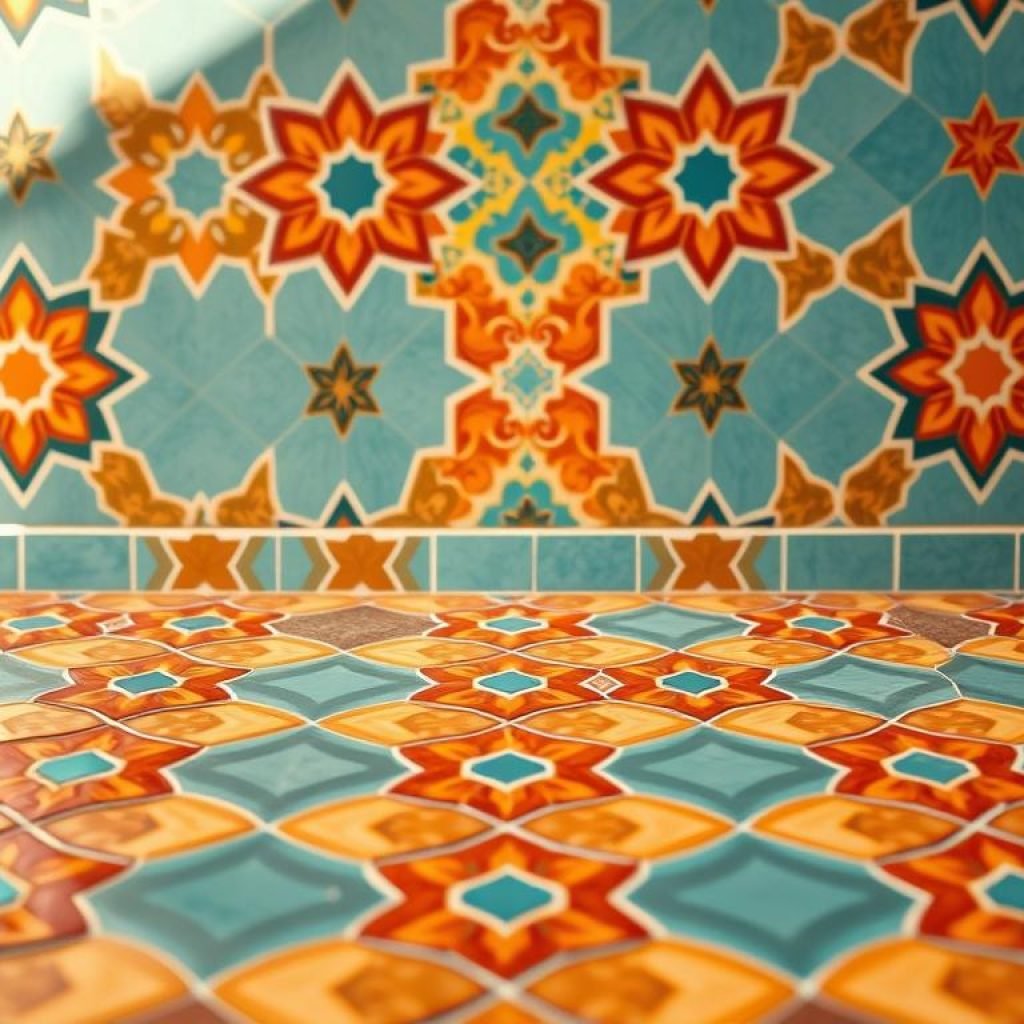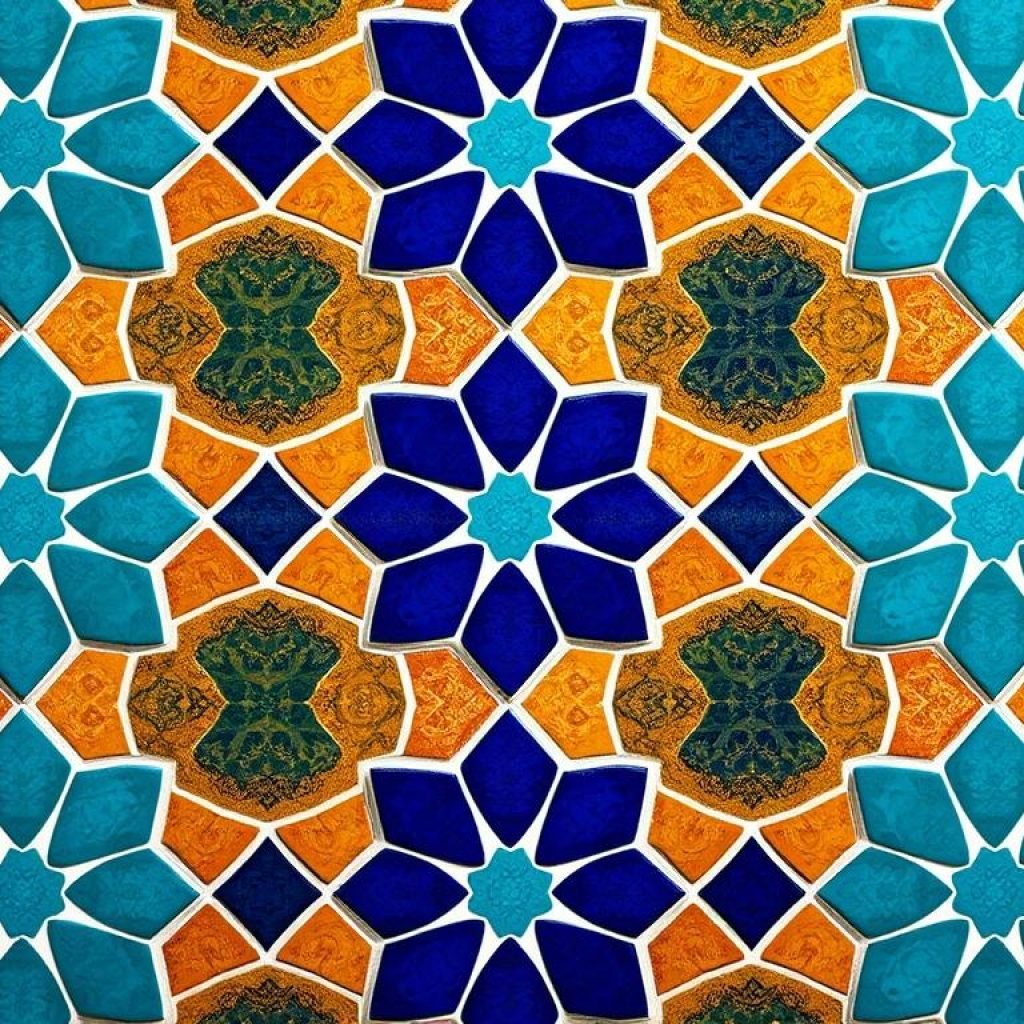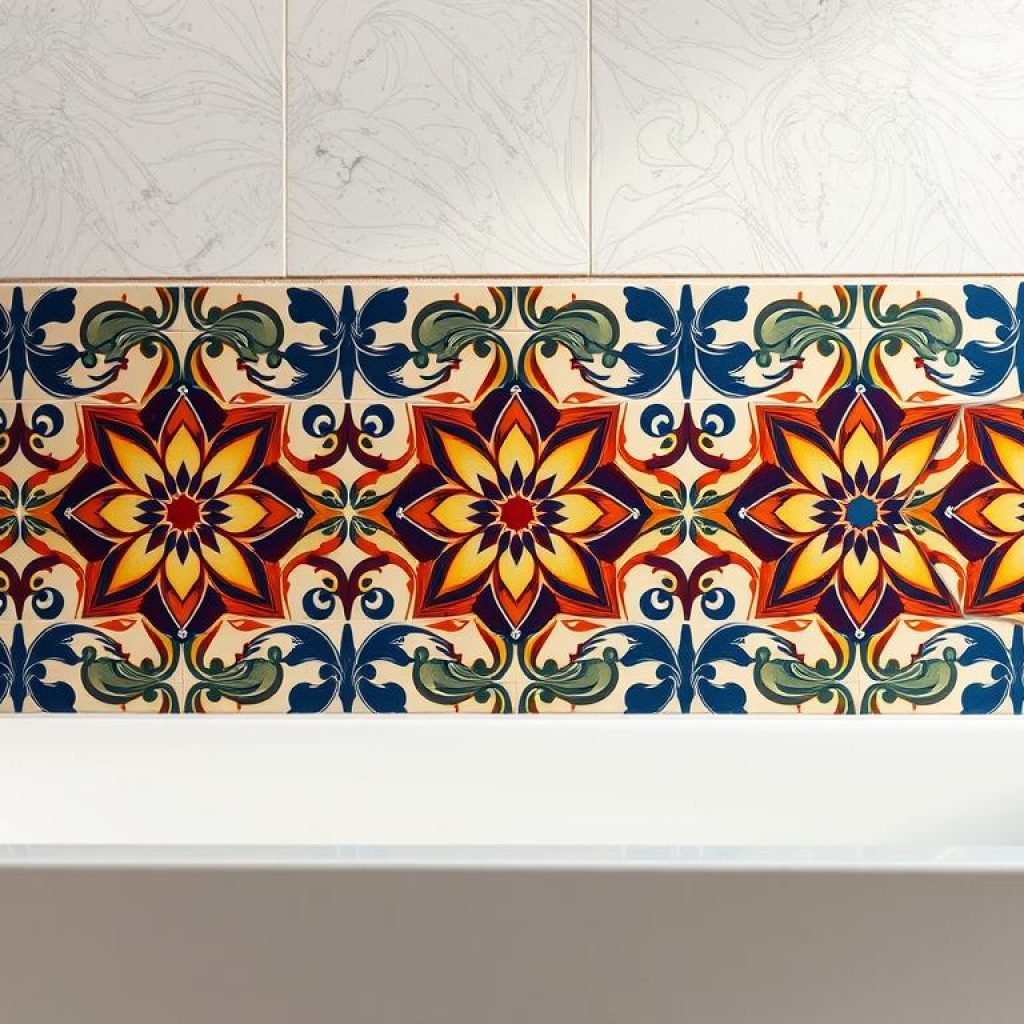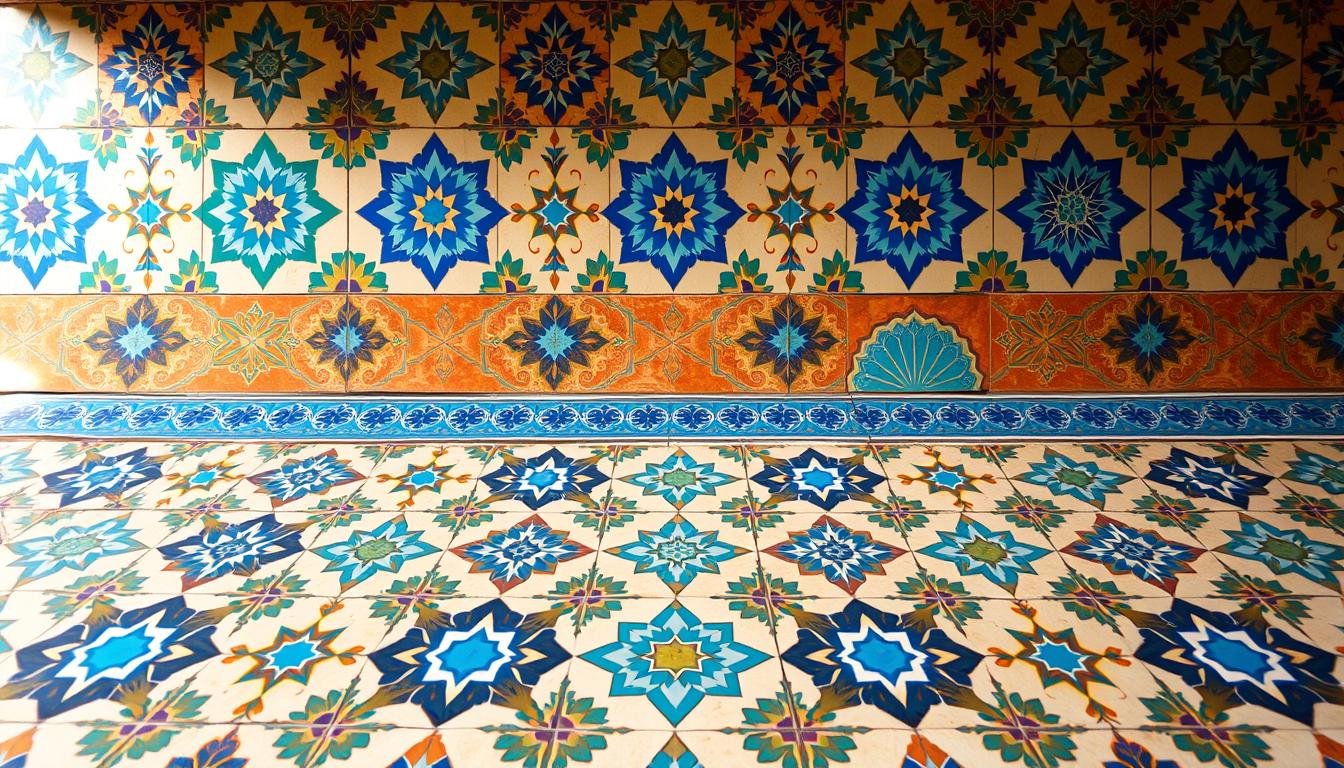Stepping into a Moroccan-inspired space feels like entering a world of vibrancy and opulence. The intricate patterns, vibrant colors, and luxurious accents create an atmosphere that is both relaxing and culturally rich. For many, this design style offers a unique blend of tradition and modern comfort.
Moroccan design is known for its attention to detail. From the handcrafted tiles to the ornate metalwork, every element tells a story. The use of bold patterns and rich textures transforms any space into a sanctuary of luxury. This guide will help you navigate and appreciate these stunning spaces with ease.
Whether you’re a first-time visitor or a design enthusiast, understanding the cultural significance of these spaces is key. The blend of traditional motifs and modern touches creates a harmonious balance. Let’s explore how to make the most of this unique experience.
Key Takeaways
- Moroccan-inspired spaces blend tradition and luxury for a unique experience.
- Intricate patterns and vibrant colors are key design elements.
- Understanding cultural significance enhances appreciation.
- Handcrafted tiles and ornate metalwork add opulence.
- This guide offers practical insights for first-time visitors.
Exploring Moroccan Bathroom Culture
The allure of Moroccan-inspired spaces lies in their rich cultural heritage and intricate craftsmanship. These spaces are more than just functional areas; they are a testament to centuries of artistry and tradition. From the detailed tile work to the symbolic patterns, every element tells a story of cultural evolution.
Historical and Cultural Influences
Moroccan design is deeply rooted in history. The use of intricate patterns and handcrafted tiles dates back to ancient times. These elements were not just decorative but also symbolic, often representing themes of nature, spirituality, and community.
One of the most iconic features is the arabesque motif, which reflects the Islamic artistic tradition. This motif, along with quatrefoils and geometric designs, creates a sense of harmony and balance. The craftsmanship behind these patterns is a blend of skill and cultural pride.
“The art of Moroccan tile making is a centuries-old tradition, passed down through generations of artisans.”
The Role of Bathrooms in Moroccan Tradition
In Moroccan culture, bathrooms are more than just utilitarian spaces. They are designed to offer a sense of relaxation and luxury. The influence of hammams, or traditional bathhouses, is evident in the layout and decor of modern Moroccan bathrooms.
These spaces often feature ornate tile work, lanterns, and decorative accents that create a serene atmosphere. The blend of utility and opulence is a hallmark of Moroccan design, making these spaces both functional and visually stunning.
| Traditional Elements | Modern Adaptations |
|---|---|
| Handcrafted tiles | Contemporary tile designs |
| Ornate lanterns | Modern lighting fixtures |
| Arabesque motifs | Simplified geometric patterns |
| Hammam-inspired layouts | Spacious, open designs |
Understanding these cultural nuances enhances the experience of using and appreciating Moroccan-inspired spaces. Whether you’re visiting a traditional hammam or enjoying a modern bathroom, the blend of history and luxury is unmistakable.
Essential Morocco bathroom tips for Tourists
Navigating a Moroccan-inspired space can be both exciting and unfamiliar for first-time visitors. These spaces blend traditional motifs with modern touches, creating a unique experience. To make the most of your visit, it’s important to understand the practicalities and cultural nuances.

Practical Guidance for First-Time Visitors
When entering a Moroccan-inspired space, take time to appreciate the intricate patterns and handcrafted tiles. These elements are not just decorative but also hold cultural significance. Here are some practical tips to ensure a smooth experience:
- Bring your own towel and soap, as these may not be provided.
- Wear comfortable clothing that respects local customs.
- Familiarize yourself with the layout to avoid confusion.
Respecting Local Customs and Etiquette
Respect is key when engaging with traditional Moroccan spaces. Avoid touching or damaging the ornate fixtures and mosaic patterns. Here’s a quick guide to navigating local etiquette:
| Do’s | Don’ts |
|---|---|
| Admire the craftsmanship from a distance. | Touch or lean on delicate tile work. |
| Use provided amenities respectfully. | Leave personal items unattended. |
| Follow local dress codes. | Wear shoes in designated areas. |
By following these guidelines, you can enjoy the luxury and relaxation of Moroccan-inspired spaces while respecting their cultural heritage.
Navigating Cultural Etiquette in Moroccan Bathrooms
Understanding cultural etiquette is essential when exploring Moroccan-inspired spaces. These areas blend traditional motifs with modern luxury, creating a unique experience. To fully appreciate the beauty and functionality of these spaces, it’s important to follow local customs and practices.
Respecting the intricate patterns and handcrafted tiles is a key part of the experience. These elements are not just decorative but also hold deep cultural significance. Here’s how you can navigate these spaces with respect and appreciation.
Dos and Don’ts When Using Local Facilities
When using Moroccan-inspired spaces, certain practices ensure a smooth and respectful experience. Here’s a guide to help you navigate local etiquette:
| Do’s | Don’ts |
|---|---|
| Admire the craftsmanship from a distance. | Touch or lean on delicate tile work. |
| Use water fixtures conservatively. | Waste water or leave taps running. |
| Follow local dress codes for modesty. | Wear shoes in designated areas. |
| Respect communal areas and privacy. | Engage in loud or disruptive behavior. |
“Respecting local customs is not just about etiquette; it’s about honoring the culture and history behind every design element.”
By following these guidelines, you can enjoy the relaxation and comfort of Moroccan-inspired spaces while respecting their cultural heritage. Whether you’re admiring the intricate patterns or using the facilities, cultural awareness enhances the experience.
Traditional Moroccan Design Inspirations
Traditional Moroccan design is a celebration of artistry, blending history with modern elegance. This style is known for its intricate details and vibrant aesthetics, creating spaces that are both functional and visually stunning. From tiles to textiles, every element tells a story of craftsmanship and cultural pride.

Iconic Moroccan Tiles and Patterns
Moroccan tiles, such as zellige and mosaic, are a hallmark of this design style. These handcrafted pieces feature intricate patterns inspired by nature, geometry, and Islamic art. The use of bold colors and detailed motifs transforms any wall or floor into a work of art.
These tiles are not just decorative; they reflect centuries of tradition. The arabesque motif, for example, symbolizes harmony and balance. Each tile is a testament to the skill and dedication of Moroccan artisans.
Elegant Lanterns and Textile Accents
Lanterns and textiles play a key role in Moroccan design. Handcrafted lanterns cast beautiful shadows, creating a warm and inviting ambiance. Textiles, such as richly patterned rugs and cushions, add texture and comfort to any space.
These elements are more than just accessories; they enhance the overall aesthetic. The combination of light and texture creates a sense of luxury and relaxation, making the space feel truly special.
Architectural Features and Decorative Motifs
Moroccan architecture is known for its ornate details and unique features. Arched doorways, carved wood panels, and decorative plasterwork are common elements. These features add depth and character to any room.
The balance between tradition and innovation is evident in these designs. Modern adaptations often simplify traditional motifs, making them suitable for contemporary spaces. This blend of old and new ensures that Moroccan design remains timeless and versatile.
“Moroccan design is a fusion of artistry and functionality, where every detail tells a story.”
By incorporating these elements, you can bring the essence of Moroccan design into your home. Whether it’s a mosaic accent or a handcrafted lantern, each piece adds a touch of elegance and cultural richness.
Creating a Relaxing and Functional Space
Designing a Moroccan-inspired space is about blending relaxation with practicality. Every detail, from the intricate patterns to the handcrafted tiles, serves a purpose. This approach ensures the space is both beautiful and functional.
Designing for Comfort on the Go
For tourists, comfort is key. Portable solutions like foldable stools or compact storage can make the space more user-friendly. These additions maintain the luxury of the design while enhancing practicality.
Lighting plays a crucial role in creating a relaxing atmosphere. Soft, warm lights paired with natural materials like wood and stone can transform the space. This combination adds a touch of nature, making the area feel serene.
Incorporating Practical Amenities for Tourists
Modern amenities can seamlessly blend with traditional Moroccan design. Features like fog-free mirrors and temperature-controlled fixtures add convenience without compromising the style.
High-quality textiles, such as plush towels and rugs, enhance the luxurious feel of the space. These elements are both functional and visually appealing, adding texture and comfort.
“A well-designed space balances aesthetics with practicality, creating an environment that is both beautiful and functional.”
For more inspiration on blending tradition with modern functionality, explore these stunning Moroccan bathroom ideas.
Modern Touches in Moroccan Bathroom Design
Blending modern innovation with timeless tradition, Moroccan-inspired spaces offer a unique fusion of style and functionality. This approach allows for the preservation of cultural charm while incorporating contemporary elements that enhance usability and efficiency.

Integrating Contemporary Fixtures
Modern technology has found its way into Moroccan-inspired spaces, creating a seamless blend of old and new. Rainfall showerheads, sleek vessel sinks, and minimalist faucets are now common additions. These fixtures not only elevate the design but also improve the overall experience.
Streamlined lighting solutions, such as LED strips or recessed lights, complement the intricate patterns of traditional tiles. This combination ensures the space remains visually stunning while providing practical illumination.
Innovative products like fog-free mirrors and temperature-controlled fixtures are gaining popularity. These additions retain the cultural essence while meeting modern expectations. For example, a fog-free mirror with a Moroccan frame adds both functionality and aesthetic appeal.
“The fusion of modern fixtures with traditional elements creates a space that is both functional and culturally rich.”
Current home décor trends highlight the use of modernized adaptations in Moroccan-inspired spaces. Freestanding tubs with handcrafted details or wall-mounted vanities with ornate carvings are perfect examples. These pieces balance classic ornamentation with contemporary functionality.
By integrating modern touches, designers can upgrade the space without compromising its historical aesthetics. This balance ensures that every element, from the tile patterns to the lighting, works harmoniously to create a cohesive and inviting environment.
Incorporating Moroccan Tiles and Mosaic Patterns
Moroccan tiles and mosaics bring a unique blend of artistry and functionality to any space. Their vibrant colors and intricate patterns create a visual feast, transforming walls and floors into stunning focal points. Whether you’re designing a new area or revamping an existing one, these elements can elevate the style and atmosphere of your space.
Choosing the Perfect Tile Layout
Selecting the right tile layout is key to achieving a cohesive look. Start by considering the size and shape of the area. Larger tiles work well for expansive walls, while smaller tiles are ideal for detailed accents. Pair bold, patterned tiles with simpler, monochromatic ones to avoid overwhelming the eye.
Color coordination is equally important. Traditional Moroccan colors like cobalt blue, emerald green, and terracotta create a harmonious palette. For a modern twist, combine these with neutral tones like white or gray. This balance ensures the design remains vibrant yet balanced.
Crafting Vibrant Mosaic Accents
Mosaic accents are a hallmark of Moroccan style. These intricate designs can serve as focal points, adding depth and character to your space. Begin by selecting a central motif, such as a geometric or floral pattern. Surround it with complementary tiles to create a cohesive design.
When arranging mosaics, consider the balance between complexity and simplicity. Use intricate patterns sparingly to highlight specific areas, like a backsplash or accent wall. This approach maintains visual harmony while showcasing the artistry of Moroccan craftsmanship.
“The art of Moroccan tile-making is a centuries-old tradition, where every piece tells a story of cultural heritage and skill.”
For a high-impact look, mix glossy and matte finishes. Glossy tiles reflect light, enhancing color depth, while matte tiles provide a non-slip surface. This combination adds both luxury and practicality to your design.
By carefully selecting and arranging Moroccan tiles and mosaics, you can create a space that is both visually stunning and deeply rooted in tradition. Whether you’re designing a wall or floor, these elements will bring a touch of Moroccan elegance to your home.
Luxury Elements to Enhance Your Bathroom Experience
Transforming a functional space into a luxurious retreat requires thoughtful design and opulent details. By incorporating high-quality materials and elegant finishes, you can create a serene oasis that feels both timeless and modern. Let’s explore how to elevate your space with luxurious touches.
Opulent Features and Finishing Touches
Luxury is in the details. Ornate mirrors, vintage brass fixtures, and plush textiles can instantly elevate the ambiance of your space. These elements not only add visual appeal but also enhance functionality. For example, a statement mirror with built-in LED lighting combines style with practicality.
High-quality materials like copper, glass, and intricately patterned tiles convey opulence. These materials are durable and visually stunning, making them ideal for creating a cohesive design. Pairing bold patterns with subtle accents ensures a balanced and harmonious look.
“The key to luxury is in the details—every element should tell a story of craftsmanship and elegance.”
Practical Suggestions for Incorporating Luxury
You don’t need a massive budget to add luxurious touches. Start with small changes, like upgrading your towels to plush Egyptian cotton or adding a decorative tray for toiletries. These simple upgrades can make a big impact.
For a high-end transformation, consider investing in a freestanding bathtub or a rainfall showerhead. These features create a spa-like experience at home. Pair them with soft lighting and natural elements like stone or wood to enhance the calming ambiance.
| Luxury Element | Impact |
|---|---|
| Ornate mirrors | Adds elegance and reflects light |
| Vintage fixtures | Brings a timeless charm |
| Plush textiles | Enhances comfort and warmth |
| Patterned tiles | Creates visual interest |
By thoughtfully incorporating these elements, you can transform your space into a luxurious retreat. Whether you’re working with a high-end budget or making small upgrades, the right details can make all the difference.
Conclusion
Exploring the artistry of Moroccan-inspired spaces reveals a world where tradition meets modern elegance. From intricate tile patterns to luxurious design elements, these spaces offer a unique blend of functionality and beauty. Understanding and respecting the cultural significance behind each detail enhances the experience, making it both meaningful and memorable.
For travelers, embracing the practical and opulent aspects of these spaces ensures a seamless and enriching journey. Whether admiring handcrafted accents or enjoying modern amenities, the harmony of old and new creates a truly special atmosphere.
To dive deeper into this captivating style, explore resources like creating a Moroccan bath at home or learn about avoiding common travel mistakes. Let these inspiring ideas transform your own space into a sanctuary of elegance and comfort.




Comment (0)